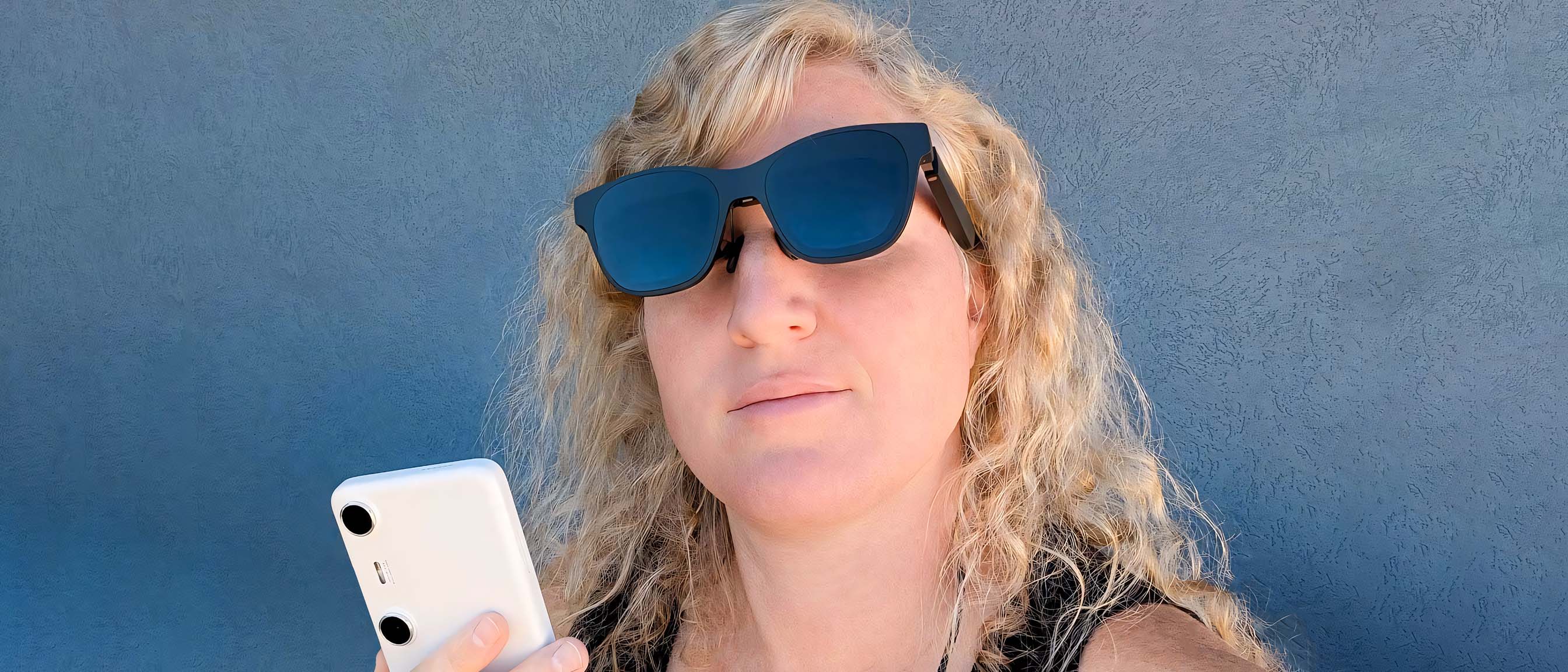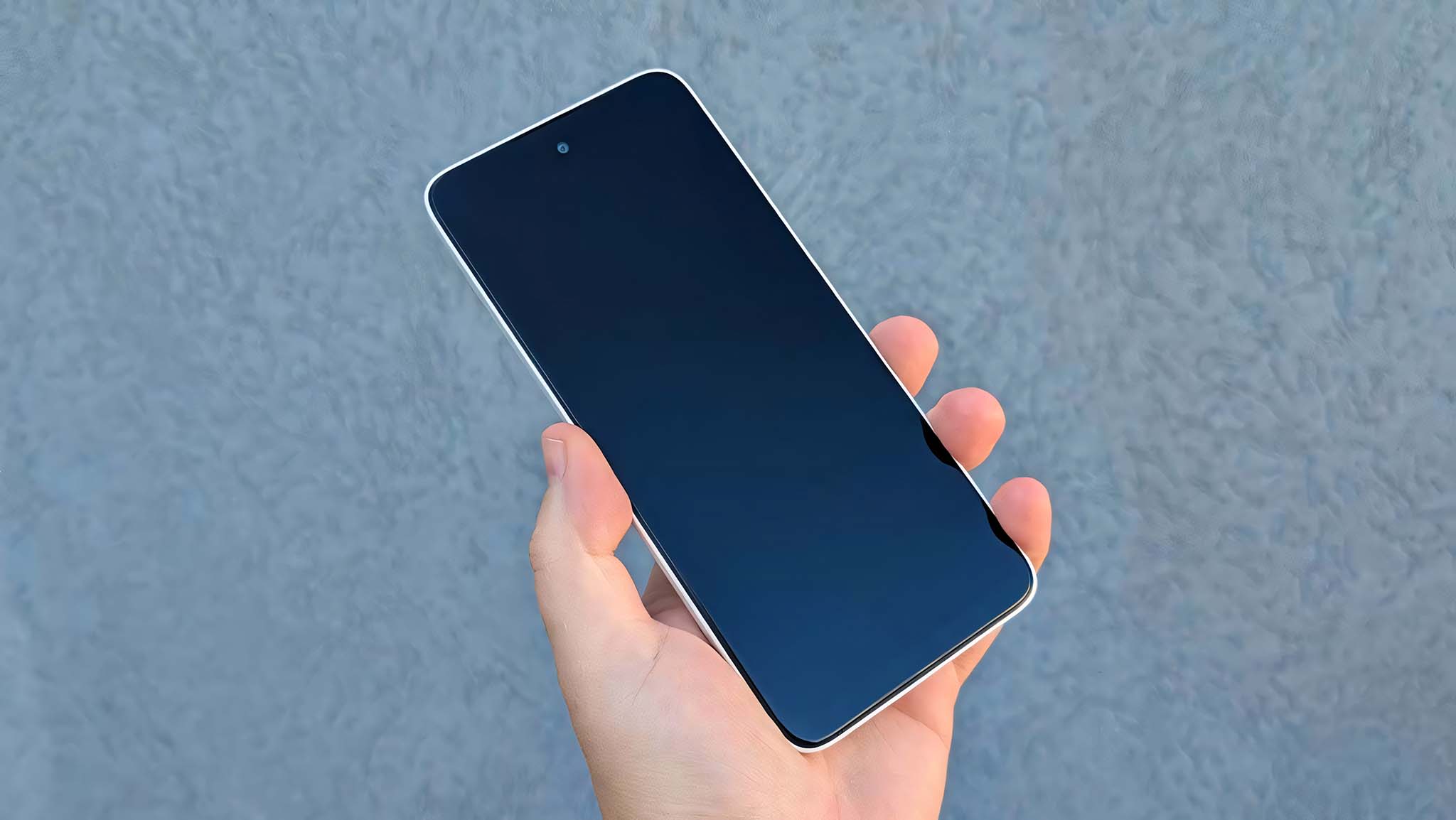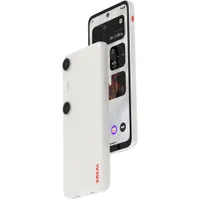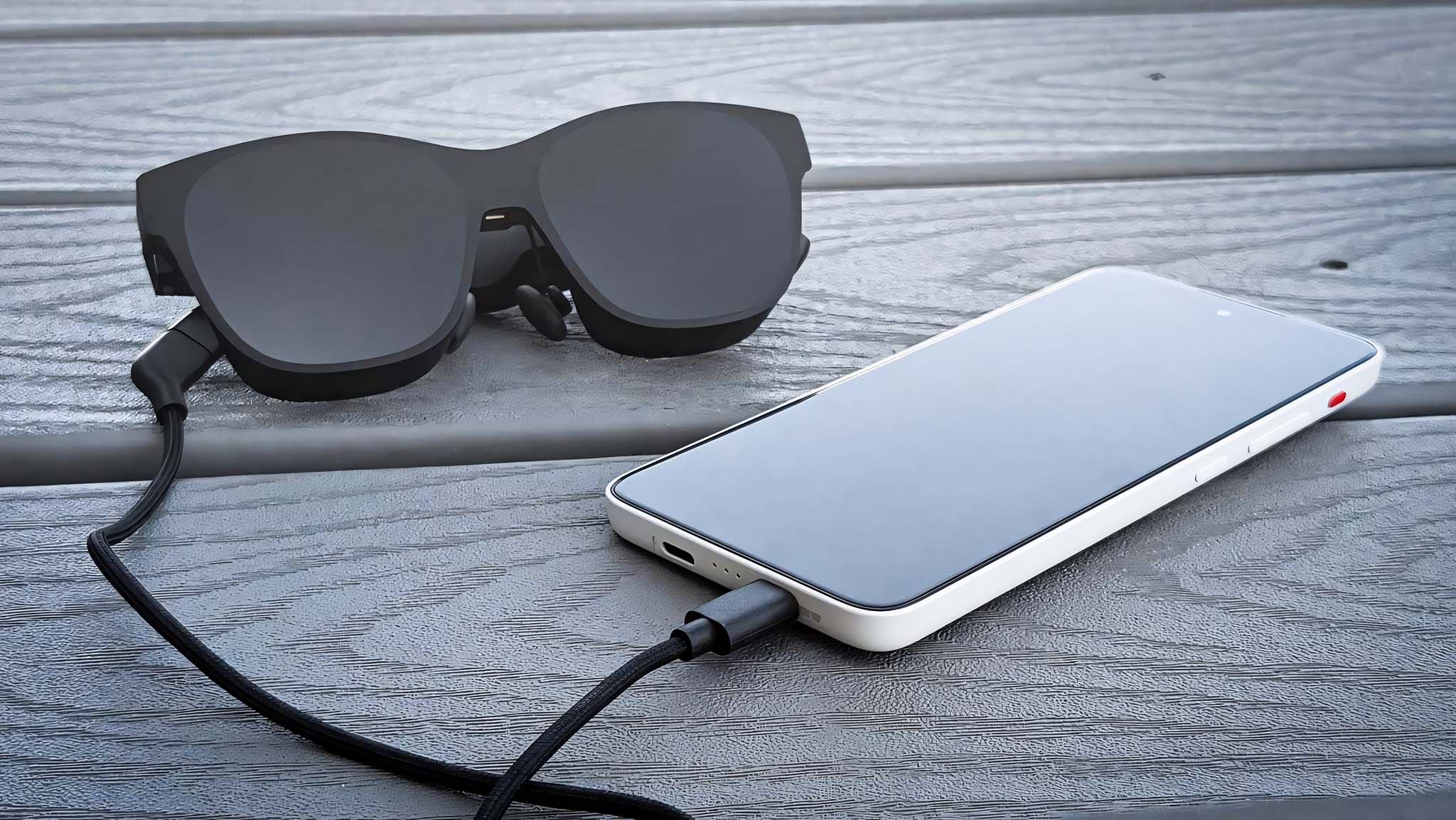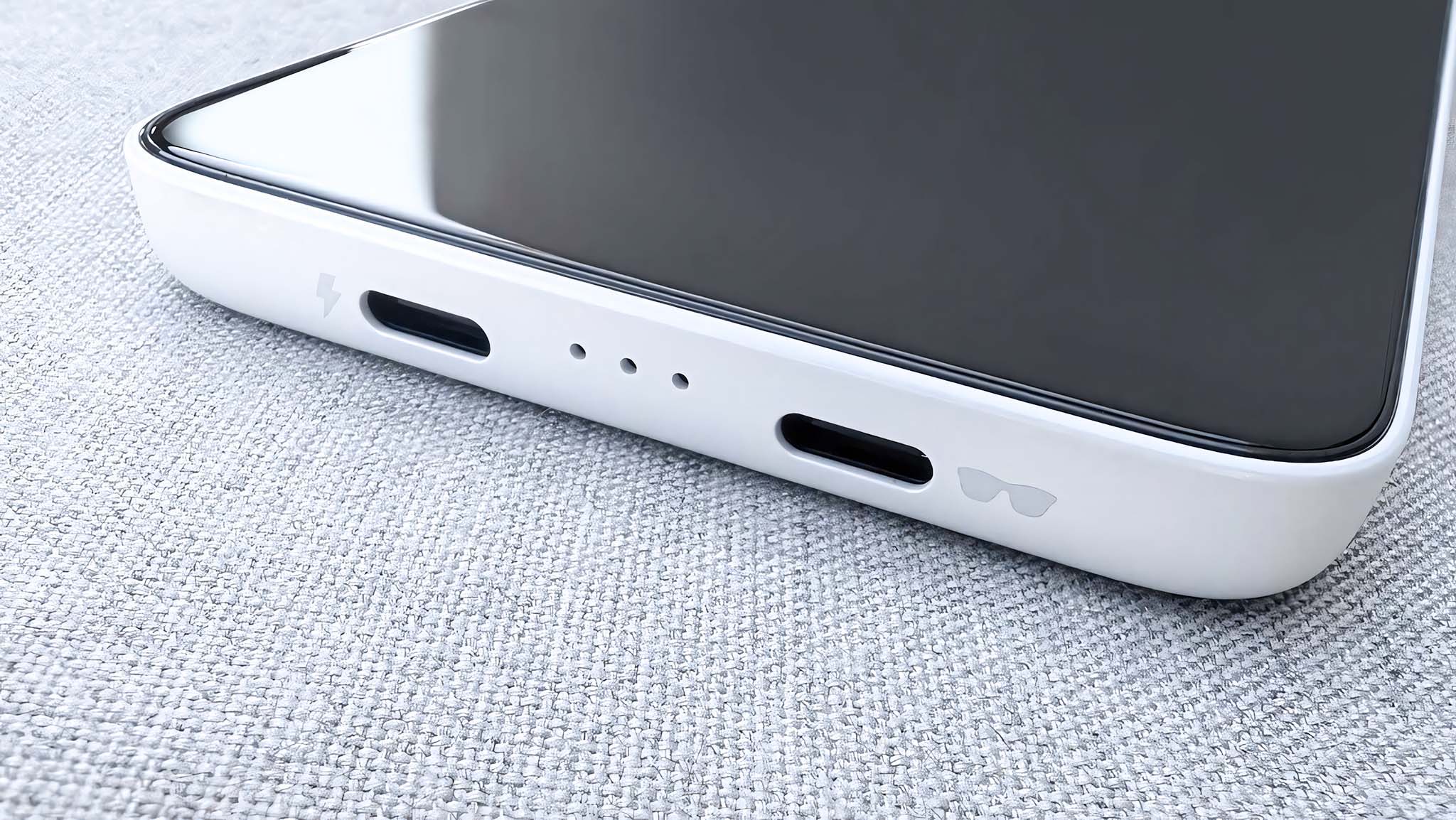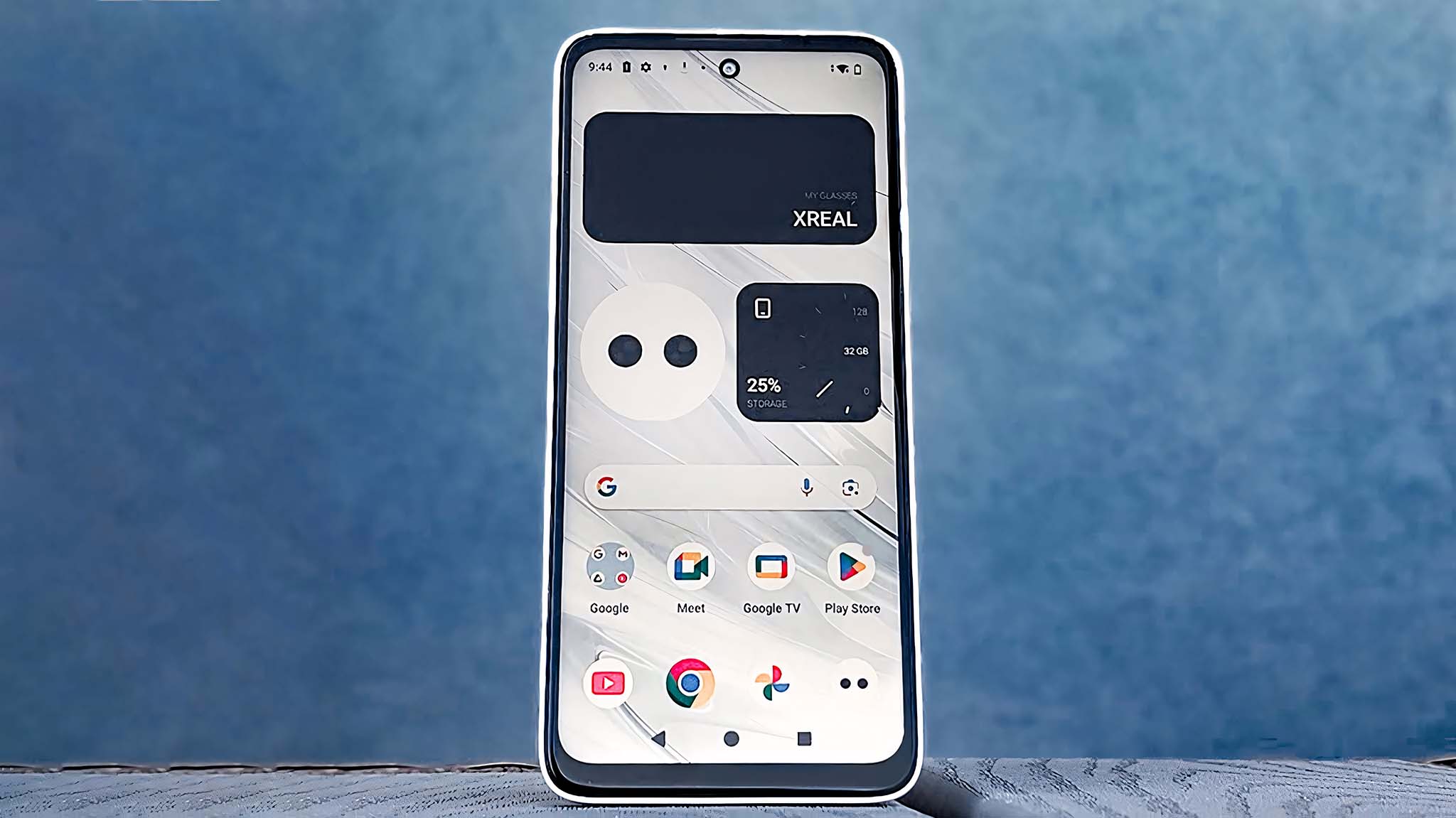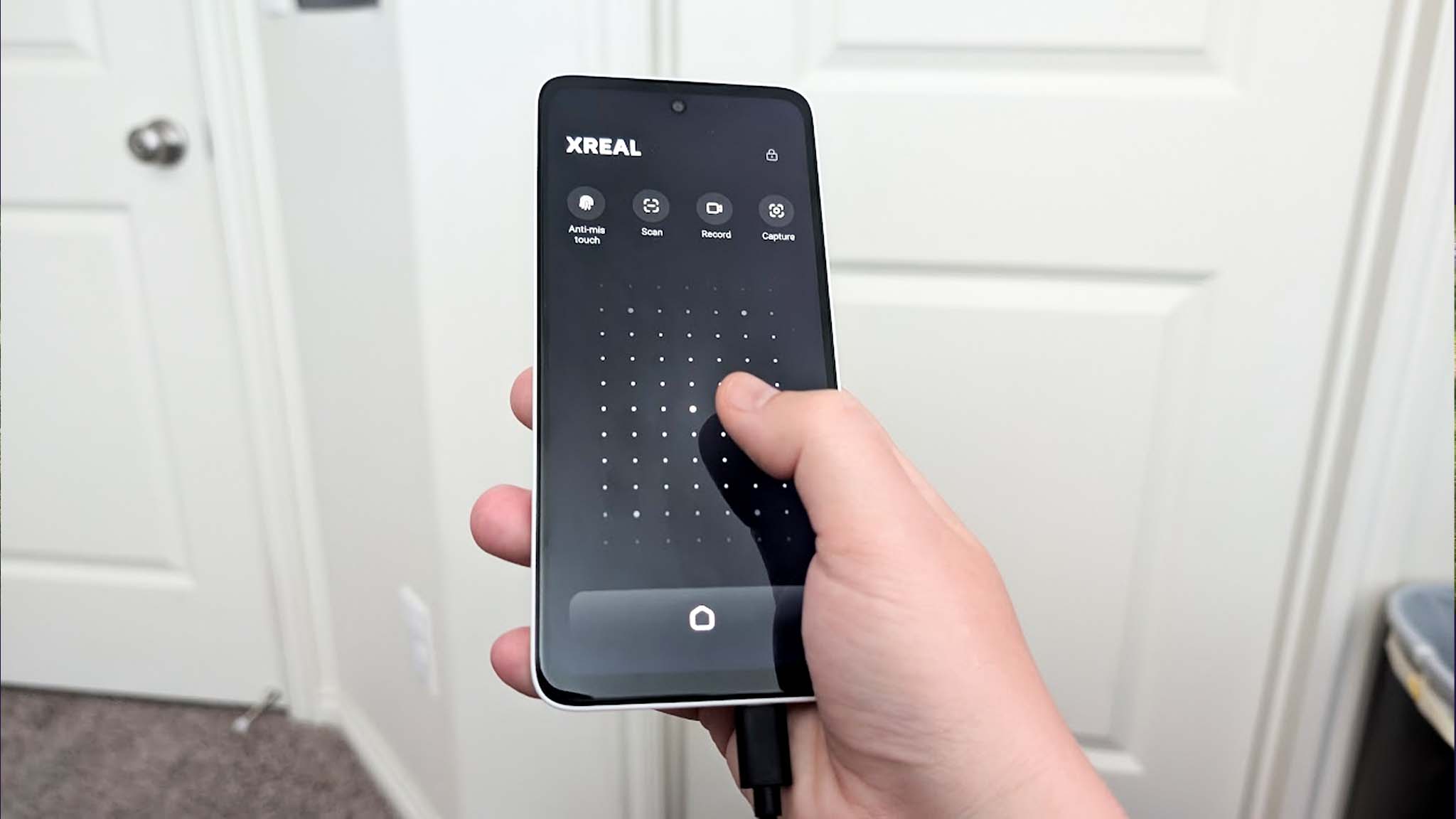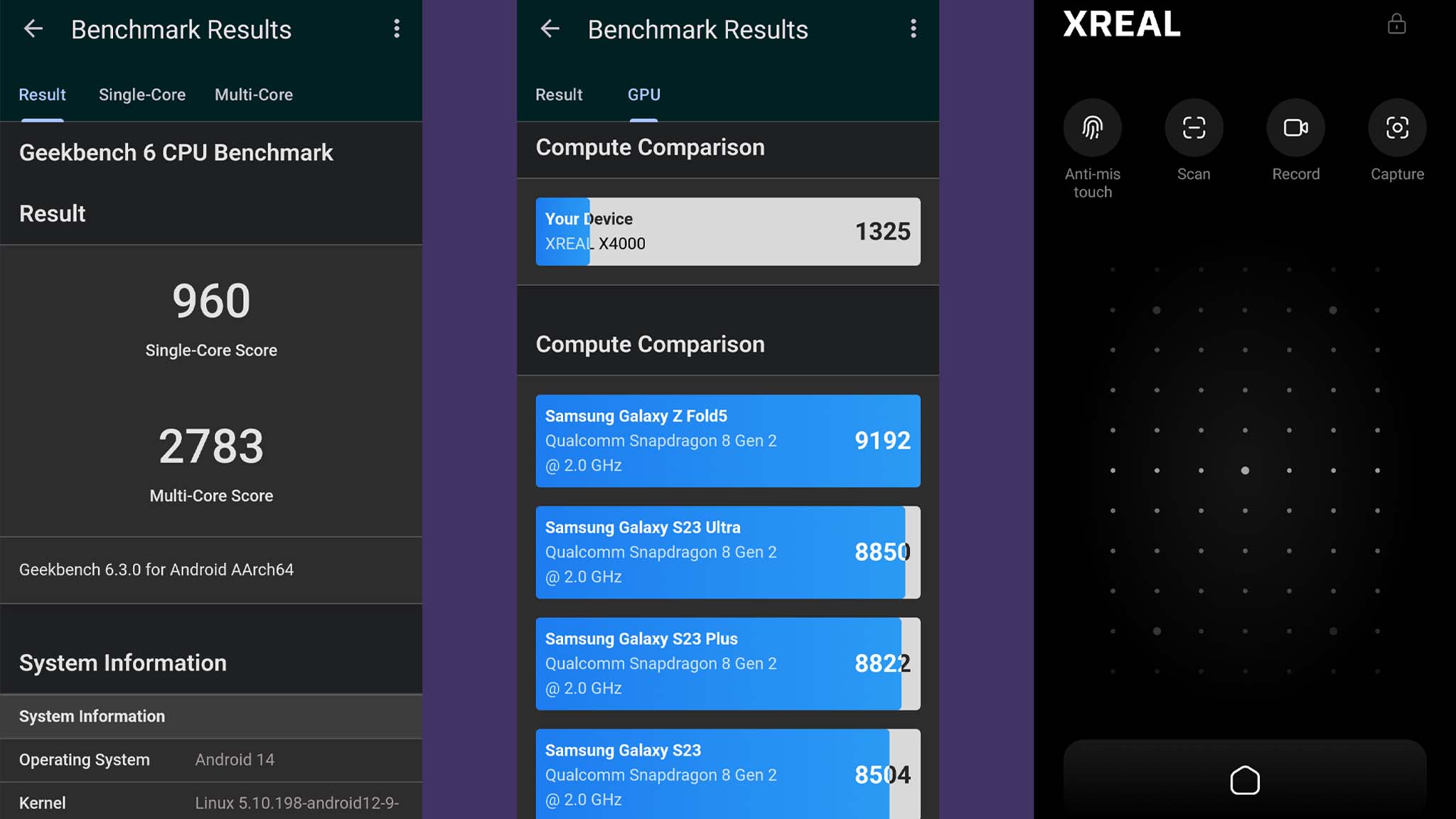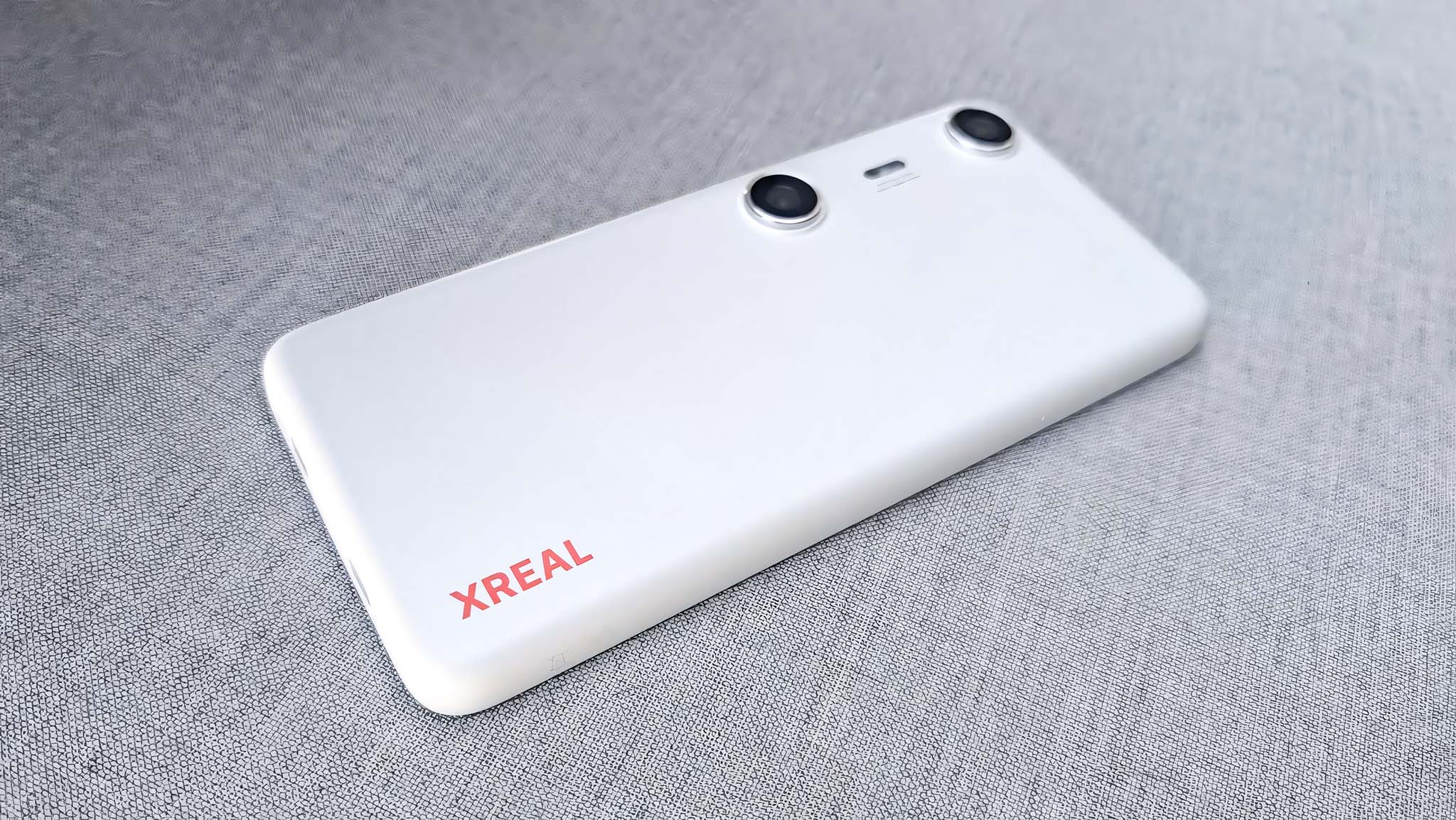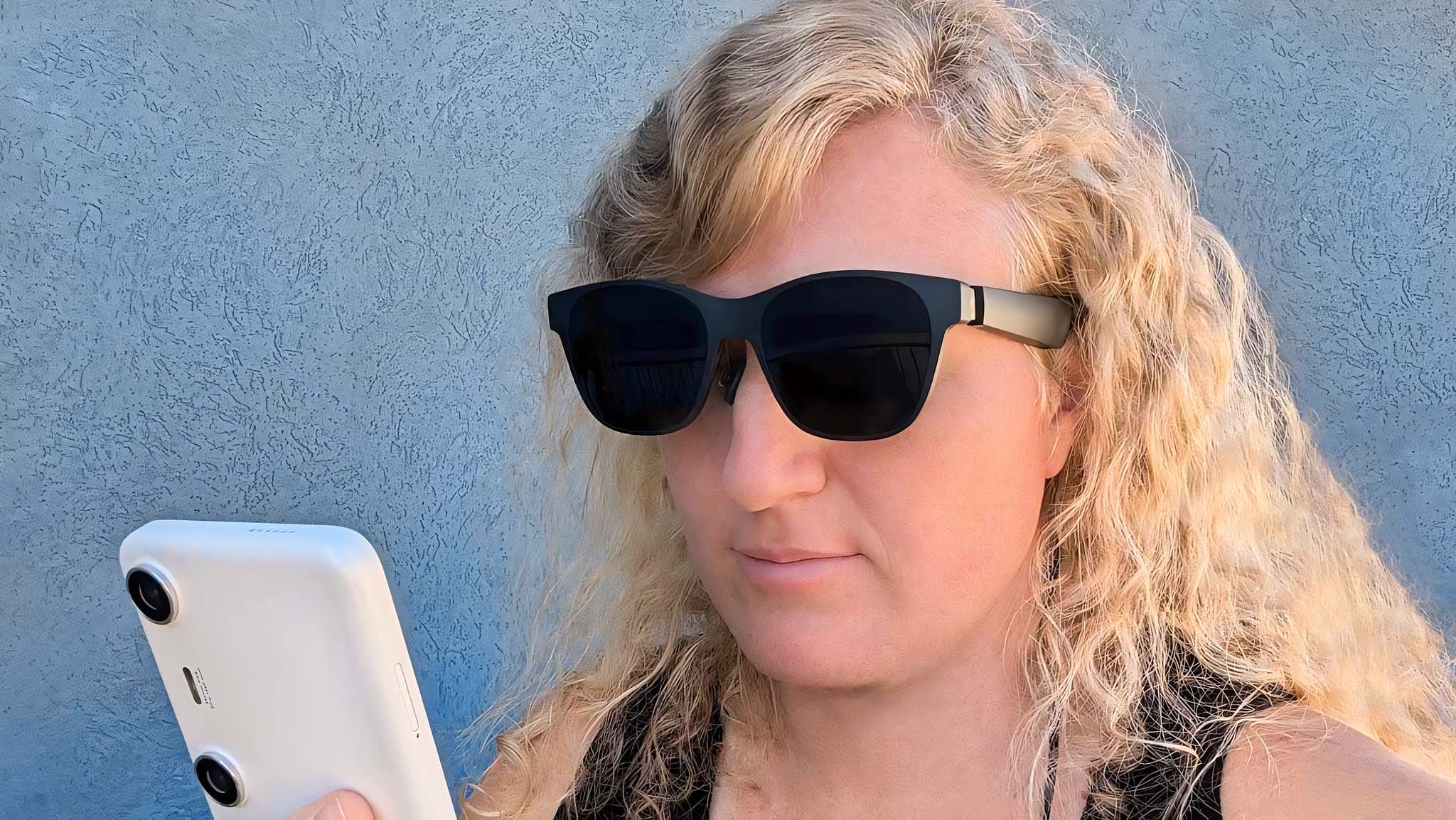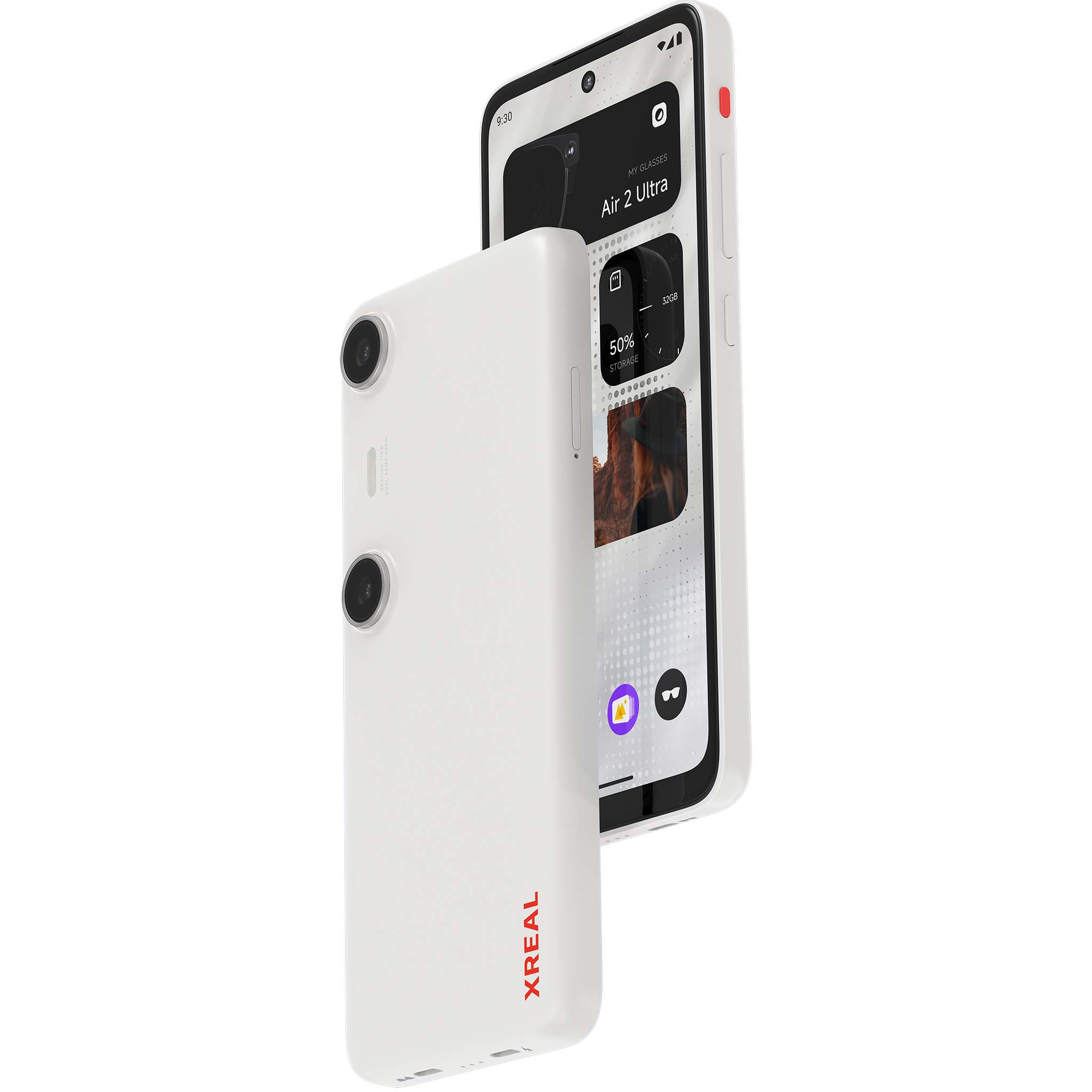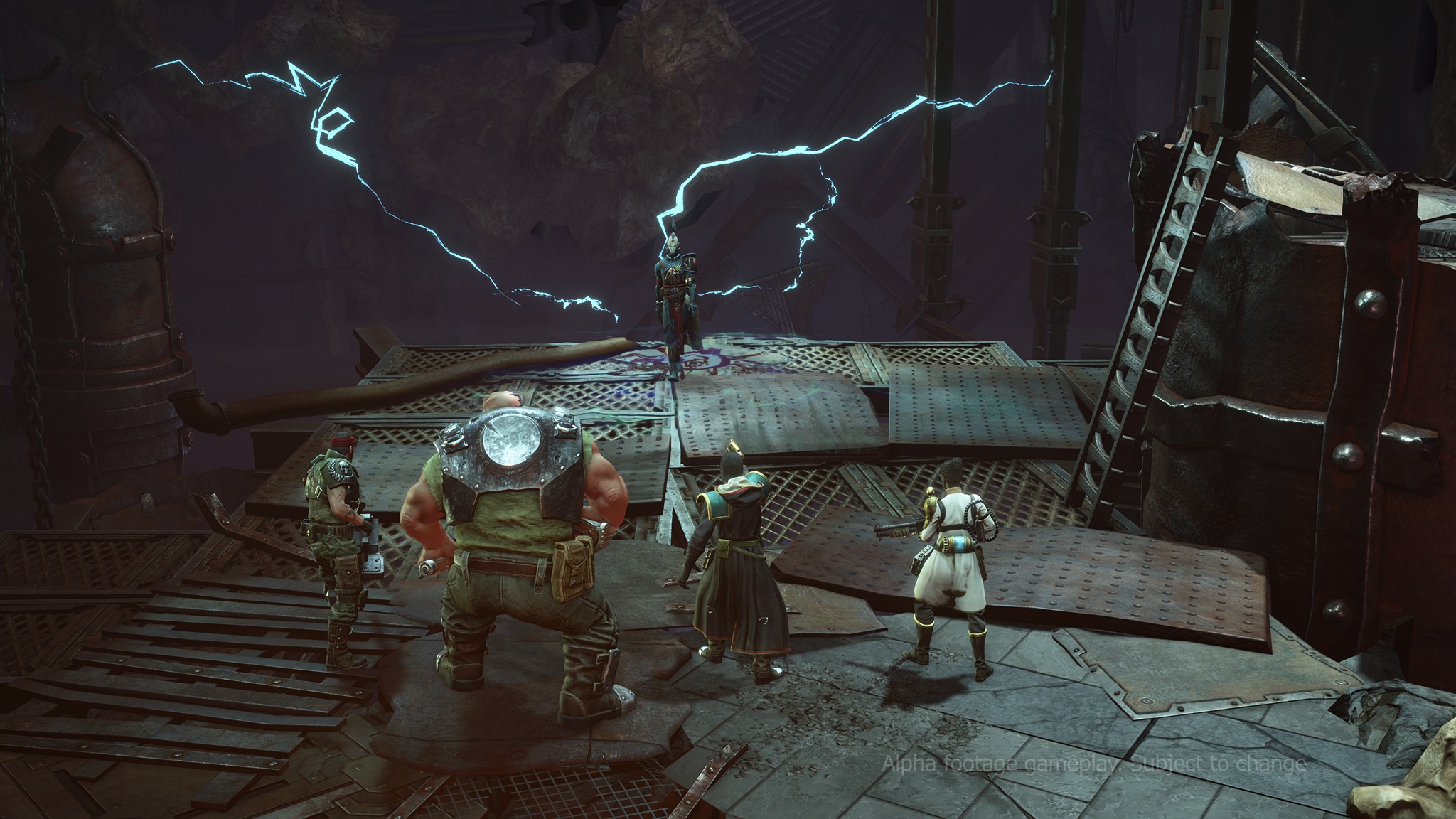Windows Central Verdict
The Beam Pro is a fantastic accessory that allows you to view 2D apps in a 3D space. Despite looking like a phone, it's actually a small (and affordable) spatial computer that connects to your XREAL glasses. Additionally, being able to make 3D videos and 3D photos is fun. Having an extra USB-C port on the bottom allows you to charge it while still using it or connect another accessory to it. Plus, this means your phone is free to use like a phone while you use the Beam Pro. Some apps are awkward when used with Beam Pro, but updates could fix that.
Pros
- +
Navigation is familiar thanks to Android 14-based nebulaOS
- +
Inexpensive for a spatial computer
- +
Works with "millions of apps"
- +
Easy to use
- +
1080p display with up to 90Hz refresh rate
- +
Offers decent battery life and saves phone battery life
Cons
- -
Doesn't work with computers, consoles, and handhelds
- -
Some apps are awkward in spatial mode
- -
Not very powerful
Why you can trust Windows Central
Earlier this year, I was able to check out XREAL's products for the first time and I learned first hand why this augmented reality (AR) company had the "largest market share in global AR headsets in 2023" (thanks CNBC). Its AR glasses are very convenient to use, but they have traditionally required you to plug them into your phone, computer, or other device in order to work. In the case of a phone, this means that it would take up the one and only USB-C port and drain your battery faster. Another issue is that only some phone manufacturers incorporate the proper internals that make XREAL glasses compatible with the phone. For instance, I love my Google Pixel 8, but it doesn't support XREAL glasses.
To resolve these issues, the AR glasses company developed the Beam Pro, a separate accessory that can run millions of apps without pulling power from your phone. While it looks and behaves much like a smartphone, the Beam Pro is actually an inexpensive spatial computer that is equipped with dual cameras for the purpose of taking 3D videos and photos.
I spent over a week using the XREAL Beam Pro with a pair of XREAL Air 2 Pro glasses (as seen in our XREAL Air 2 Pro review). During that time, I used various apps, played games, and took 3D videos of my pets. Here's what I think about XREAL's spatial computer accessory.
This XREAL Beam Pro review unit was provided by XREAL. The company wasn't provided access to this review's content prior to publishing.
XREAL Beam Pro: Price, availability, and specs
Price: Starting at $199
Processor: Qualcomm Snapdragon 6 Gen 1
GPU: Qualcomm Adreno 710
Connectivity: Wi-Fi-only | 5G
OS: Android 14 w/ NebulaOS
RAM: 6GB | 8GB
Storage: 128GB | 256GB
Screen: 6.5-inch LCD 2K touchscreen
Cameras: Dual 50MP 3D cameras
Ports: 2x USB-C, microSD card reader
Battery life: Up to 4 hours in spatial mode / Over 24 hours in mobile mode
Dimensions: 6.41 x 2.97 x 0.39 inches (162.84 x 75.55 x 10.00mm)
Weight: 7.2oz (204g)
There are two Beam Pro configuration options to choose from — A 6GB RAM and 128GB SSD Beam Pro for $199.00 or an 8GB RAM and 256GB SSD Beam Pro for $249.00. Both can be purchased from the XREAL website. When it comes to spatial computers, that's an insanely low price. You only have to compare Apple's ridiculously expensive Vision Pro vs XREAL Air 2 Ultra and Beam Pro to see how affordable the Beam Pro is. Even in terms of a phone, the Beam Pro doesn't cost that much for the configurations offered.
We've already seen the memory and storage options, but what about other Beam Pro specs? XREAL's accessory comes with a Qualcomm Snapdragon processor with an Adreno 710 mobile GPU. One of the standout features on this phone-like device are the dual cameras on the back. They allow the Beam Pro to capture 3D videos in 4K. Meanwhile, the screen itself is a 6.5-inch LCD touchscreen that supports 2K and reaches up to a 90Hz refresh rate.
There are two ports on the bottom of the Beam Pro. One is dedicated to XREAL glasses, while the other can be used to charge the device or connect other accessories to it. You can even charge up your phone by connecting it to the XREAL Beam Pro's USB-C port.
XREAL ships the Beam Pro to US, UK, Germany, France, Italy, Netherlands, Czech, China, Japan, and Korea. The company also has plans to ship to additional locations in the future. Preorders began on July 15, and they should ship to consumers starting July 16.
All the latest news, reviews, and guides for Windows and Xbox diehards.
Our configuration recommendation
XREAL Beam Pro (6GB RAM and 128GB SSD) | $199 at XREAL
Most people will be served well with the base 6GB RAM and 128GB SSD configuration of the Beam Pro. That's plenty of space and power to run well without running out of space too quickly. If you need to, you can add additional space with a microSD card.
XREAL Beam Pro: What I like
The minute I pulled the XREAL Beam Pro out of its box, I could tell that it was well-made. This device has a good amount of weight to it at 7.2 ounces (204g) without being too heavy. For context, that's less than the Samsung Galaxy S24 Ultra, which weighs 8.22 ounces (233g). While we're at it, the Beam Pro (6.41 x 2.97 x 0.39 inches), is also just slightly bigger than the Galaxy S24 Ultra (6.39 x 3.11 x 0.34 inches).
As for the rest of the Beam Pro's design, the white casing both looks great and feels pretty sturdy in my hand. When looking at the back of the device, you'll notice two cameras with a flashlight slit between them. These dual cameras allow me to capture 3D videos and pictures as long as I am in a well-lit area. It's also easy to view the screen outside since this 2K LCD display gets plenty bright, displays imagery clearly, and looks plenty vibrant.
Button controls are located on the device's left side. There is a red-orange button, a volume button, and a power button below that. I'll explain more about that red-orange button later, but for now, suffice it to say that these controls are straightforward and responsive.
Port-wise, there are the two USB-C ports on the bottom that I previously mentioned. One is dedicated for your XREAL glasses, while the other can be used to plug in the power adapter or another accessory. This is huge because it means you can continue to use the XREAL Beam Pro while charging it up, which is a problem when using XREAL glasses with your phone. Additionally, a microSD card slot on the side of the device makes it easy to add more storage if needed.
Both an affordable mobile device and an excellent spatial computer
Overall, the Beam Pro looks, feels, and operates a lot like a phone when it isn't plugged into XREAL glasses. It specifically runs nebulaOS, which is XREAL's Android-14-based operating system. This Android familiarity makes it very intuitive to use right from the start. The circular widget with the two black circles opens the camera when tapped for fast video or photo shoots.
I also have access to several Google apps right from the main screen, but I can swipe to the right to access more rows of apps. Of course, I can always go to the Google Play store and download more apps since most, if not all, are compatible. Regardless of whether or not they support 3D, apps can be viewed when in Beam Pro's spatial computer mode, since it displays 2D apps in a 3D space.
Speaking of, as soon as I plug the XREAL Air 2 Pro USB-C cable into the Beam Pro port, the device switches into spatial computer mode. The XREAL glasses screens display apps in a pleasing floating pattern in front of my eyes, which makes everything easy to interact with.
The first time I plugged my XREAL glasses in, a tutorial popped up and explained how to control everything in spatial computer mode. All I have to do is wave the Beam Pro around like a Nintendo Wii remote and then tap the center of the Beam Pro screen to select a program or interact with settings/controls. If I'm on a page that scrolls, dragging my finger up and down progresses through the page's content. Overall, these controls are pretty easy to get the hang of right away.
If I want more options, I simply point the Beam Pro reticle away from the window and swipe up on the screen to make a menu appear. Swiping down puts this menu away again. There were a few times when I lost the reticle, or it got out of sync with where I wanted it to be, but it's easy to fix. If the reticle isn't calibrated to the center of the screen, all I have to do is point the phone forward and tap the Home button to recenter it.
Remember that red-orange button on the side of the Beam Pro? If the screen isn't centered the way I want it, I just put my head at the angle I want it to be and tap the red-orange button to re-center the screen. Quickly tapping this button also swaps between two viewing modes: Body Anchor and Smooth Follow. Body Anchor means that the displayed screen will stay in one position, to the point that turning my head can remove the screen from my field of vision. It's ideal for when you're sitting in one place and aren't moving around.
Meanwhile, Smooth Follow is best for when you're in a moving vehicle or on the move yourself. This mode makes the screen stay in front of your eyes no matter which way you turn, but it does so in a gentle manner so as to keep the viewing experience from getting choppy or jarring. As an example, I tested the Beam Pro Smooth Follow mode while doing laundry and putting away dishes. Regardless of where I turned, the screen displaying my Netflix show always stayed in front of me without causing eye discomfort. Altogether, it's a very simple device to control.
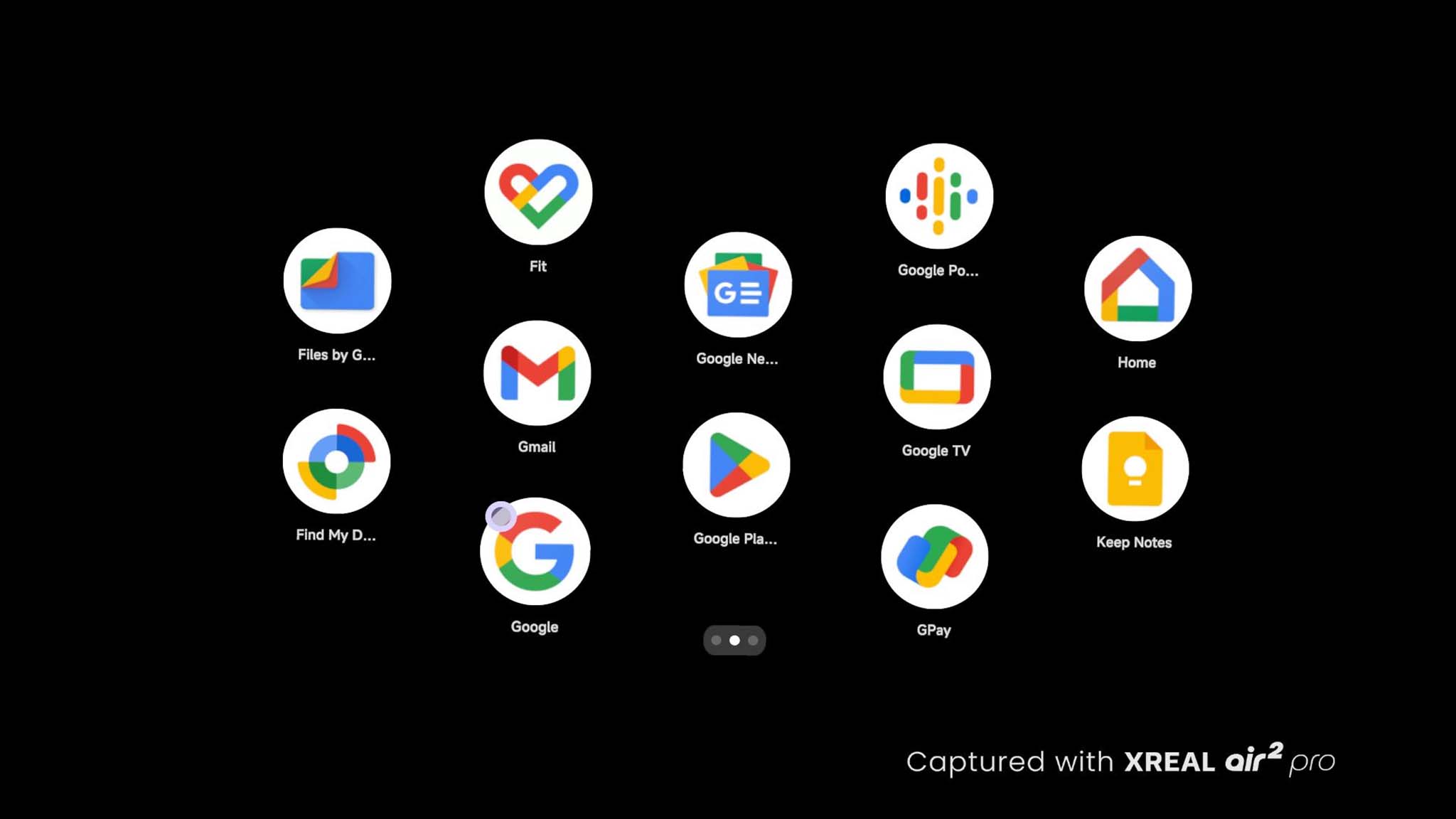
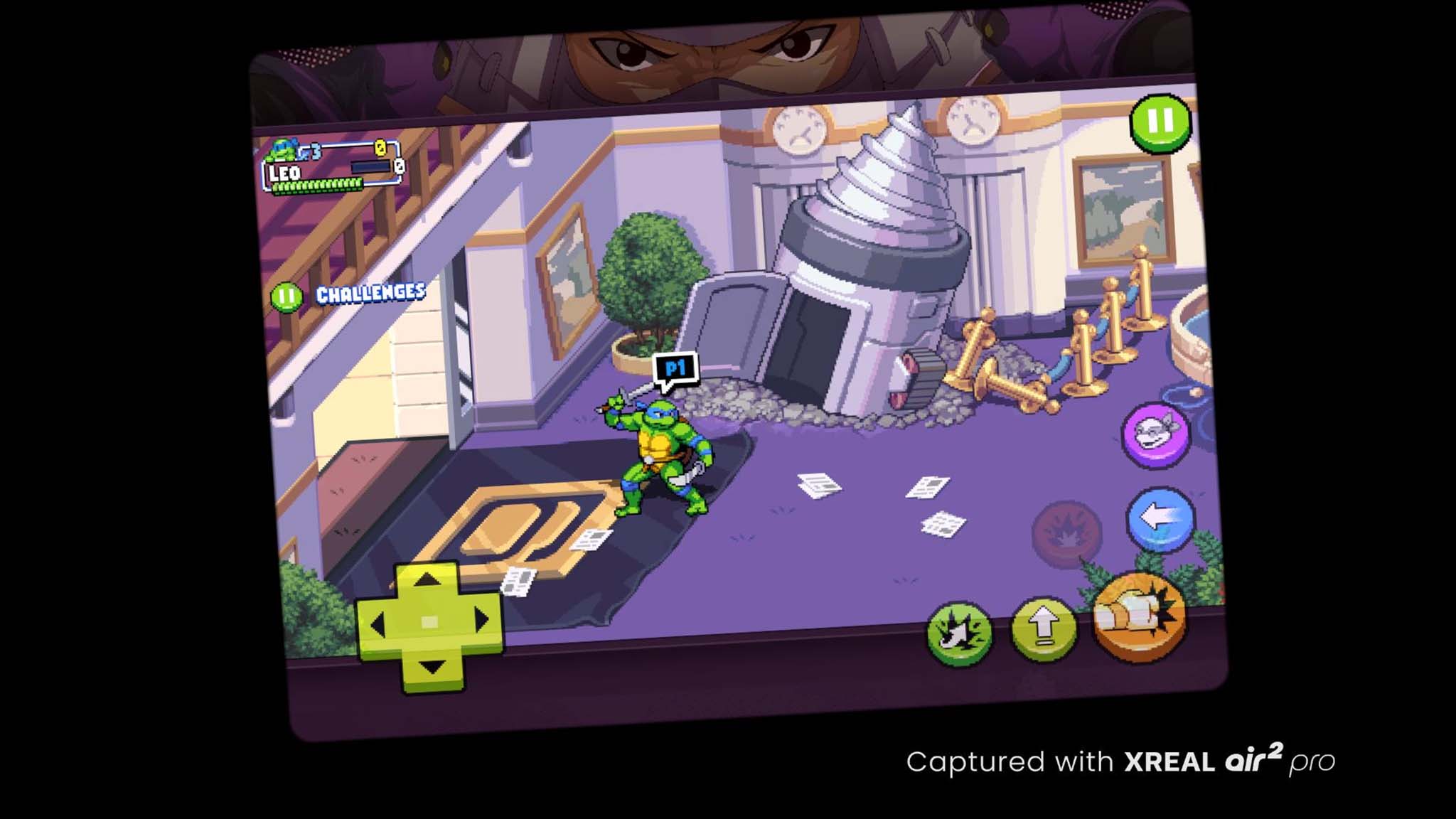
While in spatial mode, I spent time watching shows, interacting with free apps from the XREAL store, and playing various video games while using either my phone or an Xbox Controller. I'm even able to connect a wireless mouse using a USB-C dongle and can control things that way. It all works very well without issues. What's more, connecting wireless accessories is a snap, thanks to the Beam Pro's Bluetooth. However, since the device doesn't have mobile data, it must be connected to Wi-Fi in order to access the internet. This made it difficult to use when on the go.
Arguably, the most awkward part of using Beam Pro is text entry. Some apps bring up an onscreen keyboard that is easy to interact with, but others require you to look down at the Beam Pro screen and use a keyboard displayed there. Whenever the latter happened, it pulled me out of the viewing experience and felt rather inconvenient having to glance down awkwardly from behind the AR specs. This is something that could get fixed over time with updates, if developers decide to work on that.
3D fun with photos and videos
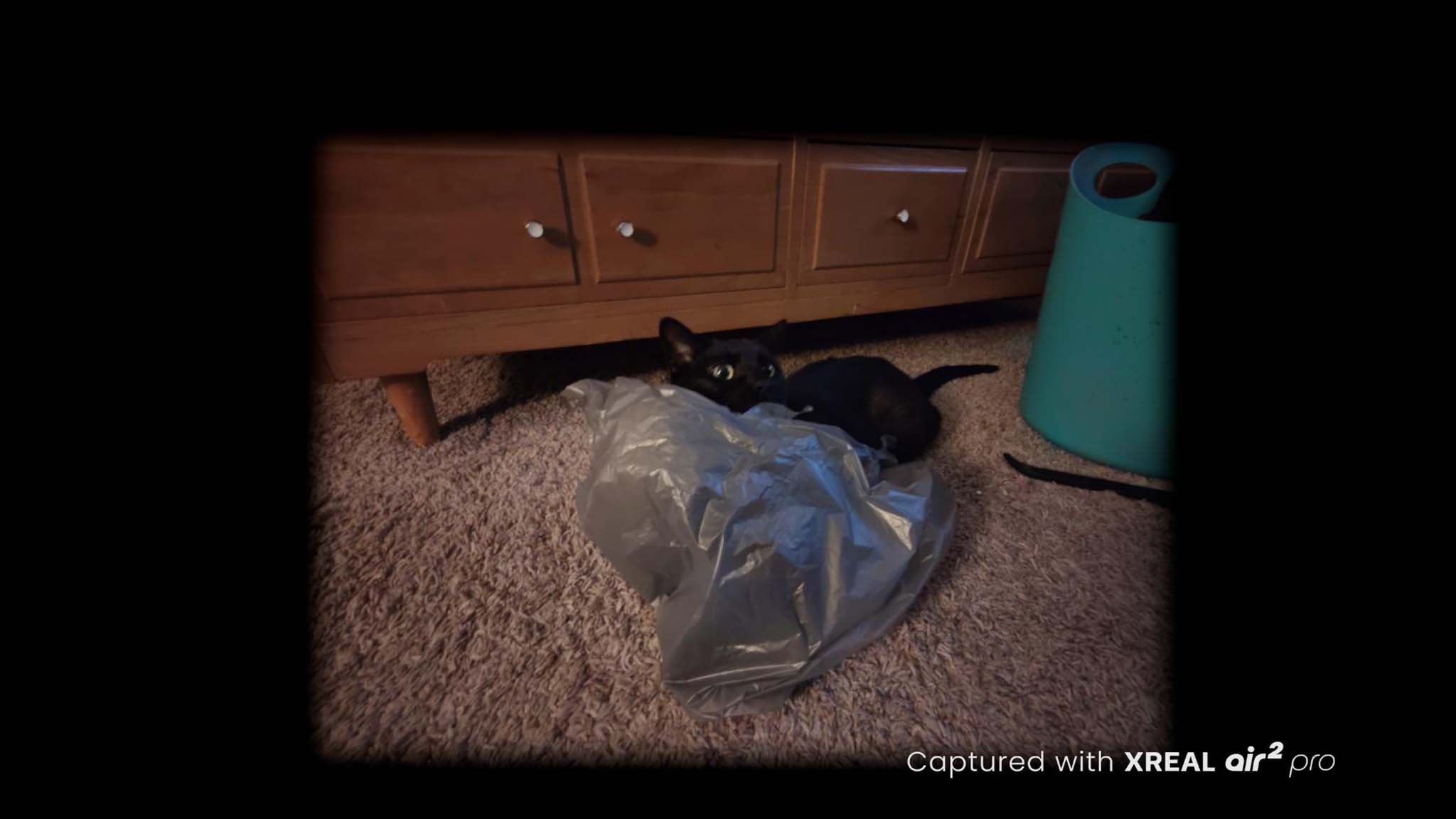
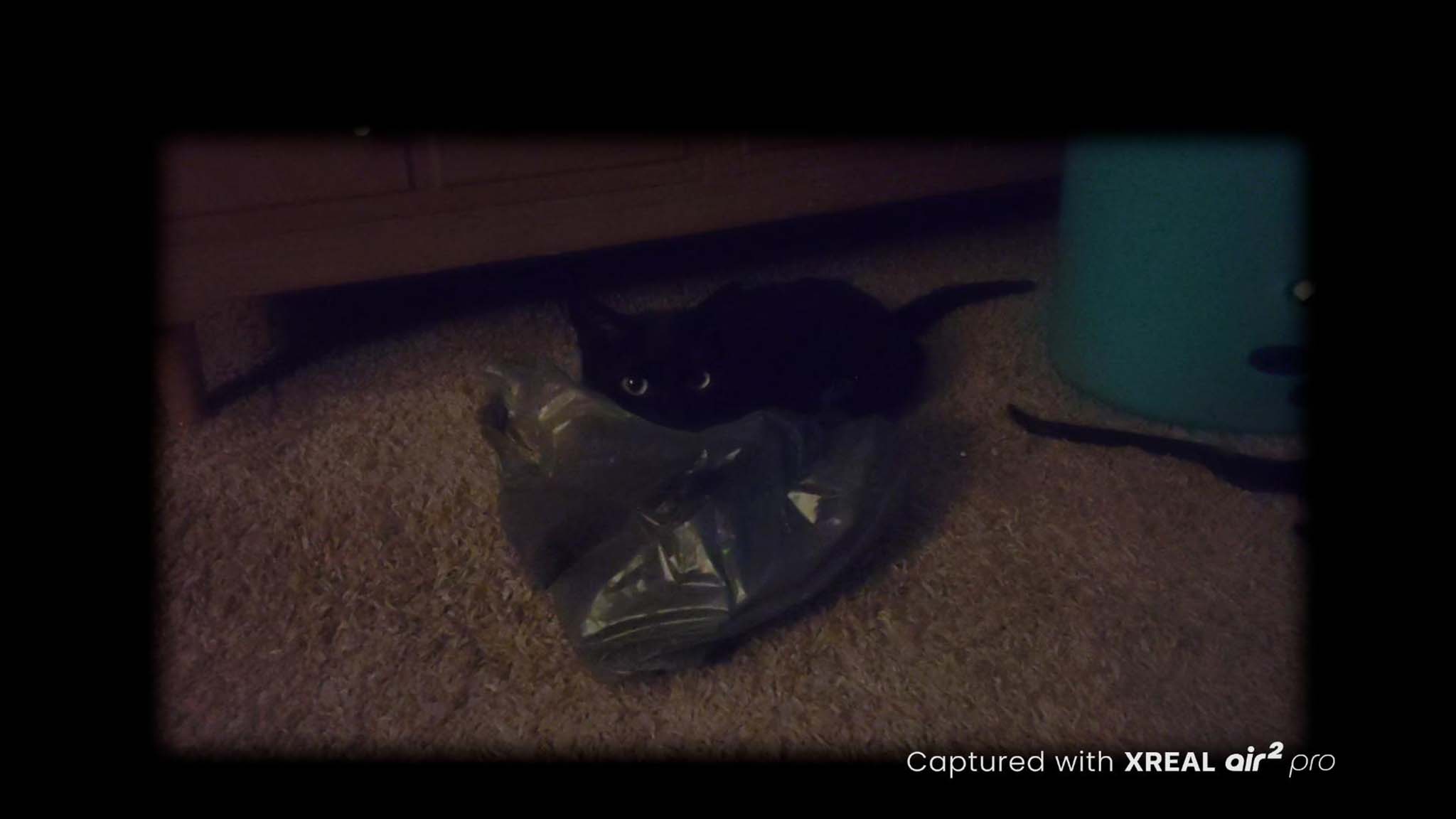
As previously mentioned, Beam Pro allows me to take videos and photos in either 2D or 3D. To test the dual 50MP True 3D cameras, I took several videos indoors and outdoors with my pets. While at the park during midday with my dog, Penny, the camera captured excellent colors and crisp detail.
However, the video camera struggled more than the photo camera when indoors, offering more pixelated and murky imagery when there wasn't enough light in a room. I've included an example of this in the image gallery above, where a photo of my cat, Sabrina, taken in a dark room is easier to see than a video still of my cat taken directly afterward. This dim-light clarity issue isn't uncommon, at all, but it's good to be aware of. As long as you capture photos and videos with enough light, the 4K resolution allows for some clear captures and vibrant colors.
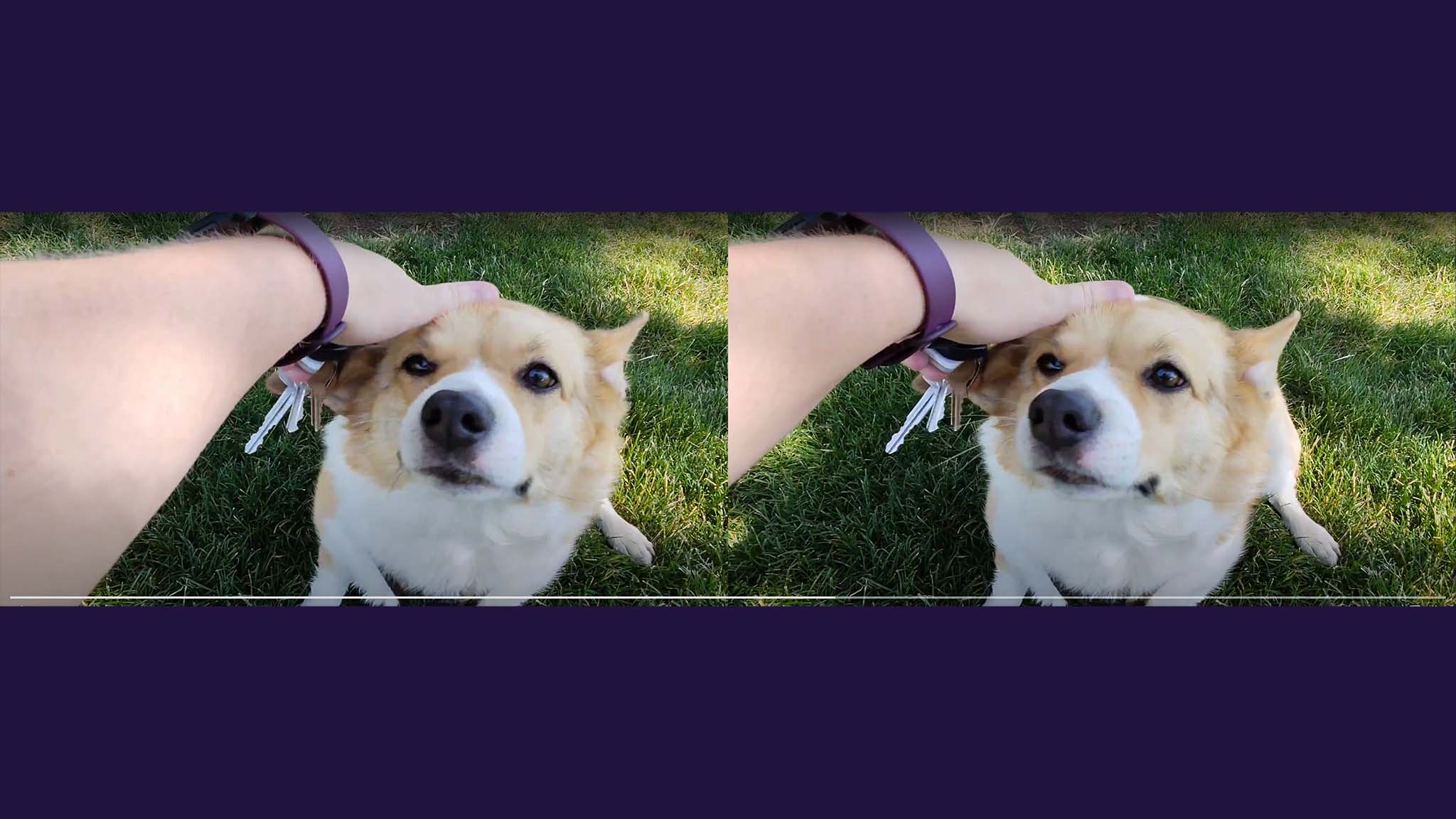

Rewatching a 3D video I've made or viewing a 3D photo I've taken while wearing the XREAL glasses is cool, but the viewing experience does feel a bit unnatural. The sensation isn't unlike when my eyes have to strain harder on one of those 2D autostereogram visual puzzles that create an optical illusion of depth. In some ways, that's exactly what's happening here. Each glasses lens displays one of the camera's captures, but since they are at a slightly different angle, it creates the illusion of depth when you focus correctly.
XREAL recommends keeping objects three to eight feet from the cameras when recording or capturing in order to get the best experience. I can vouch for this. In some of my videos, my corgi wandered off or came too close to the camera, and it's in these situations that she doesn't seem all that 3D in the videos.
Performance and battery life
For a more quantitative read on performance, I ran Geekbench 6 on the Beam Pro to check CPU and GPU performance. In the CPU test, the Beam Pro only scored a 960 single-core score and a 2,783 multicore score. It's pretty low when compared against the Galaxy S23 Ultra's 2,172 single-core score and 6,782 multicore score. Really, what this all tells you is that the Qualcomm Snapdragon 6 Gen 1 processor and Qualcomm Adreno 710 inside the Beam Pro don't provide the most powerful mobile experience, but it is stable enough to work well for most of the spatial experiences the device is intended for.
As far as battery life is concerned, one of the big reasons XREAL made the Beam Pro was to address the battery life drain issue that the glasses cause to mobile phones. Now, thanks to the Beam Pro, there is a separate device with plenty of juice so you can use your phone like a phone and the Beam Pro like a spatial computer. The Beam Pro can last for roughly three and a half hours when being used as a spatial computer or it can last over 24 hours when being used more like a regular phone.
To check battery life, I spent a day walking around with the Beam Pro in my pocket and pulled it out every time I went to use my Pixel 8. Having a phone-shaped device in either pocket feels really weird and takes up a lot of space when wearing tiny-pocketed girl's jeans, but it is doable. The Beam Pro easily lasted the whole day without getting dangerously low on juice. When I was getting ready for bed, I checked and found that it still had more than 60% battery left, which is good.
XREAL Beam Pro: What I don't like
Overall, the Beam Pro works really well and has a good design. However, it might not be a good fit for everyone.
I personally tend to use XREAL glasses far more with my laptop, computer, and gaming handhelds than I do with my phone. However, the Beam Pro is really only suited to improving the mobile user experience. As such, it's only useful for people who specifically want to use AR glasses with a mobile device.
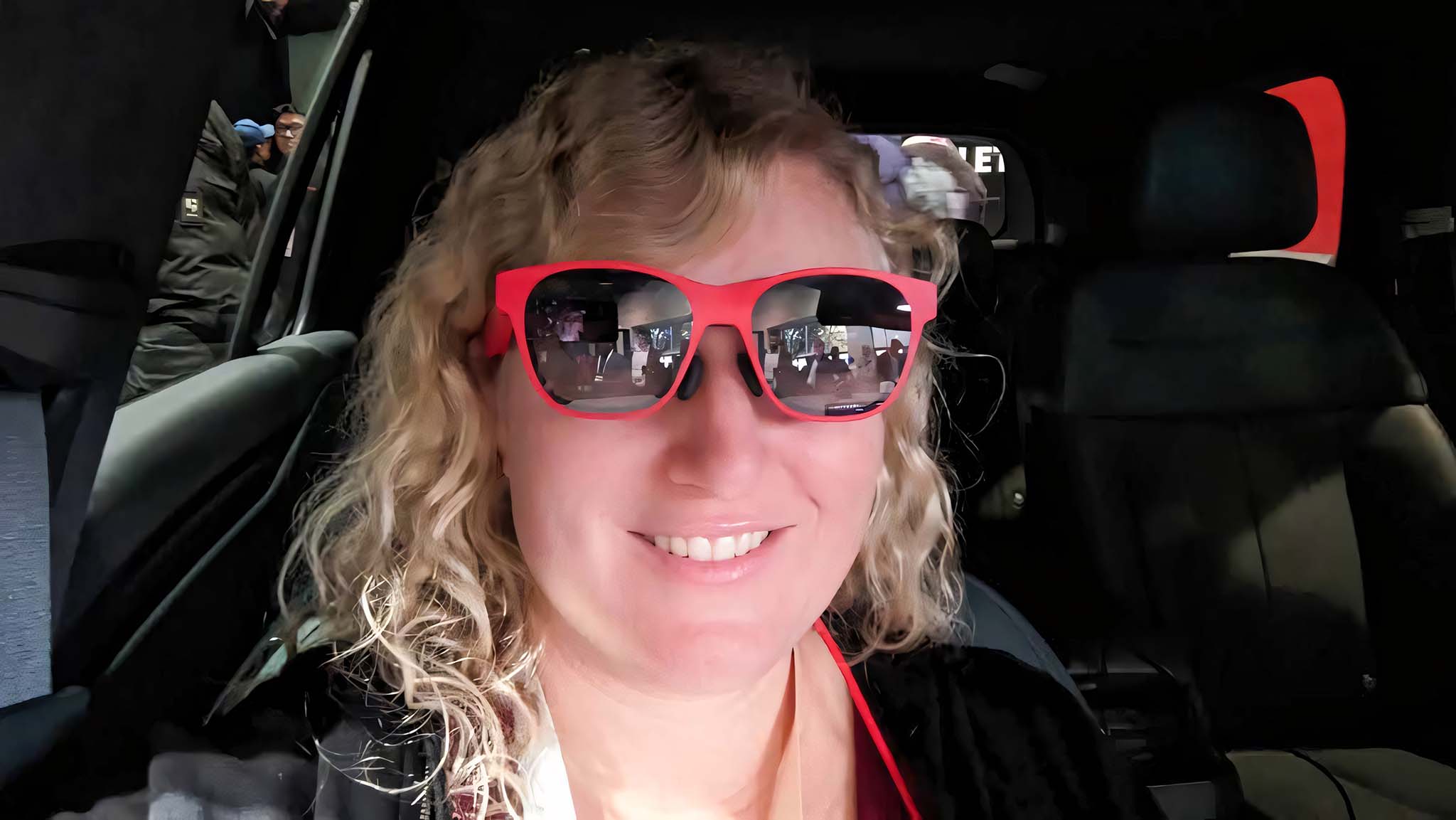
• Apple Vision Pro vs XREAL Air 2 Ultra
• XREAL Air 2 Pro review
• XREAL real-world applications
• Apple Vision Pro can't compete with HoloLens
What's more, certain apps aren't as easy to interact with using the Beam Pro as they are on regular phones. I already mentioned that it's harder to enter text in spatial mode while using certain apps, but playing certain mobile video games can also be difficult on Beam Pro.
For instance, I downloaded a few Netflix games like Teenage Mutant Ninja Turtles: Shredder's Revenge. This game specifically offers on-screen mobile controls that you're supposed to put your fingers on. However, since the Beam Pro enters spatial mode when plugged into the glasses, these controls don't display on the Beam Pro's panel. As such, I had to use the reticle to push all of the attack buttons and the D-pad buttons, which made the game a lot more jerky and difficult to play. Of course, you might be able to solve this issue with an Xbox controller, but not everyone has one of those. Plus, not all mobile games offer controller support. If you want to increase your chances of controller support, you can stick to accessing specific game services like Xbox Game Pass games while using Beam Pro and XREAL glasses.
XREAL Beam Pro: Competition
Really, the only true competitor to the Beam Pro also comes from XREAL in the form of the XREAL Beam. As you can tell by the naming convention, this is the precursor accessory to the Beam Pro, but it's different in that it doesn't have a screen nor does it have cameras; this, of course, means that it cannot record 3D videos. The lack of these features makes this accessory cost significantly less than the Beam Pro. At the time of writing, the XREAL Beam is selling for $119.00 at Amazon.
XREAL Beam Pro: Should you buy it?
✅ You should buy it if...
- You want to save phone battery life while using AR glasses: Overall, the Beam Pro is a great little device that takes the place of your phone when using XREAL glasses, so you don't have to worry about it depleting mobile juice.
- You're interested in taking 3D videos and photos: Taking 3D photos and videos really is as simple as pointing the Beam Pro at something and pressing the record/capture button.
- You want an inexpensive smart device with a screen: Seriously, this is a very low price for mobile-like gadget. So even if you don't care about the 3D aspects and just want a Wi-Fi smart device, this is an affordable option.
❌ You should not buy it if...
- You tend to use XREAL glasses with computers and gaming handhelds: Since the Beam Pro only enhances the mobile user experience, it isn't ideal for people who primarily use their XREAL glasses when connected to laptops, consoles, desktops, and game consoles.
After the days I've spent with Beam Pro and XREAL Air 2 Ultra, I can definitely say that this new XREAL accessory improves the mobile user experience. I didn't have to worry about it draining my phone after extended use, and it offers solid performance that can handle spatial computer tasks. What's more, I had a blast making 3D videos and photos and then rewatching the optical illusion with my XREAL glasses on.
Being able to watch shows while walking around and doing household chores makes the experience go by a lot faster. What's more, the Beam Pro's Smooth Follow mode makes the experience better for your eyes. This device won't work perfectly with all apps, but it can definitely make it more convenient to use some while wearing AR specs.

Self-professed gaming geek Rebecca Spear is one of Windows Central's editors and reviewers with a focus on gaming handhelds, mini PCs, PC gaming, and laptops. When she isn't checking out the latest games on Xbox Game Pass, PC, ROG Ally, or Steam Deck; she can be found digital drawing with a Wacom tablet. She's written thousands of articles with everything from editorials, reviews, previews, features, previews, and hardware reviews over the last few years. If you need information about anything gaming-related, her articles can help you out. She also loves testing game accessories and any new tech on the market. You can follow her @rrspear on X (formerly Twitter).
